Impact of COVID-19 on World Silk Industry and Consumer Market Trends
The COVID-19 has been fierce since early 2020, like most industries, the world silk industry and consumer market have been severely hit. And the epidemic has also accelerated the arrival of the “House Times” and “Cloud Times”, the marketing channels and consumption patterns is changing. In order to fully understand the impact of COVID-19 on the world silk industry and consumer market, study the future trends of the silk industry and consumption, and provide suggestions and references for companies to respond the changes, International Silk Union launched the research of Impact of COVID-19 on World Silk Industry and Consumer Market Trends.
ISU summarized surveys from Italy, Japan, Brazil, India, Thailand, Vietnam, Cambodia, Laos, Indonesia and other countries and regions to understand the impact of the COVID-19 on the world silk industry.
During the survey, we collected opinions and reviews from experts and scholars from silk enterprises and scientific research units in various countries. Some reviews are as follows.
Impact of COVID-19 on the World Silk Industry
Q: What changes do you think the COVID-19 will bring to the world silk industry and consumer market? What companies should do to resume production and increase sales? What governments and industry associations should do to strengthen the safeguards and provide support? What measures the companies should strengthen to response the epidemic?
Before, we published the impact of COVID-19 on the Italian silk industry.
The Impact of COVID-19 on the Italian Silk Industry
Some experts review
Member unit from Brazil
COVID-19 is decreasing the speed of production and consumption of all industries and all over the world. This sudden decrease will create the environment to enhance the concept of Circular Economy that enables economic growth detached from consumption of natural resources. On fashion the necessity of sustainability was pointing out to the necessity of consumption decrease on medium and long term and big retailers such as H&M and Zara were adapting themselves to it. COVID-19 will make it necessary that this changes would happen in short term. Silk industry has lots to contribute with Circular Economy and it would be great to have silk as a protagonist of a “post COVID-19 sustainable fashion concept” where products are designed, produced and used to last longer.
Kailpar Engineering Co., Ltd. (India)
As per current global situation it’s tough & wait for virus settled & demand picks up. If prices goes down too much then demand will not be there but industry peoples loose more. We had seen same recently. So I feel price stability is more important now which is a tough subject. Silk industry research of different category of fabric is going down day by day due to poor margins. If research people concentrate on silk blended fabric with some innovation of color observance more as in polyester fabrics or something price affordability to add middle class customers to use it then demand should be created.
Karnatak University (India)
As COVID-19 has transformed into a global pandemic, safety of individuals working in the field has become primary concern. As sericulture is a labour intensive industry which involves human intervention in each step of silk production to processing and sales. In my opinion safety precauations and educating the workers in industries about the virus infection is most essential.
The government should support the industries by providing tax benefits to cope up with the decreased production
The companies should show compassion and strengthen and support the workers and ensure them safe environment for working in silk industries.
Rajamangala University of Technology Thanyaburi (Thailand)
The crisis of COVID-19 has widely and hardly impacted to national and world economy. The economic of many nations have turn downward sharply, which made people cut down the spending for luxury goods. Silk and silk products are among the luxury goods that consumers would definitely postponed their purchase.
To increase the sale of silk products during this crisis would be toward medical care products.
The government could support the industry by reduce tax and vat for the whole pipeline of the silk productions.
During this epidemic, companies should slow down the production of luxury product and turn to focus on research and development of silk for healthcare and medical use.
Vietnam Sericulture Association
In order to help the companies and the workers, the Government of Vietnam worked out many policies to support:
1. Delay/postponed land rentals, VAT tax. 2. Loan with low rate and extend the due date of loan. 3. 3 months basic salary for who no work because of Covid-19.
In sericulture, the seriously impacted on farmers and companies:
1. Cocoon prices drop 50% compared with before Covid-19. 2. Cocoons can not be exported
Hoi An Silk Village(Vietnam)
Changes: Customer's consumptions will go down due to their financial affect during the epidemic. The supply chain is broken due to many countries being affected, they stop export/import process. During the quarantine period, human resource is stopped, the whole process is on pending state.
Company does: Focus on customer basic needs, what they really need after the epiedmic would be over, since customer start to save money, it will take time for customer financial recovery.
Price - reasonable price.
SentoSaSilk (Cambodia)
At the moment, people will prioritize about their life and spend money to save their life. What we need to produce at this point is something to increase the immune system, germs repellant products, and suits to protect the users from germs. At this point, no one wants to leave the house…therefore maybe fashionable indoor dresses will be fine. Create a fashion face mask that goes with the dress, and etc., Market silk as germs repellant.
Lao Sericulture (Laos)
In case of Mulberries our main customer is touristor who visiting Laos. in this situation not many forigner comming to visit Laos selling consumption dropep a lot. We now try to promote online market For the government side, it would be great if the goverment cound have some promotion subsidies for domestic market and oversea online market or tax reduction.
PT. Sutra Alam Nusantara(Indonesia)
The sericulture in Indonesia has just started. Due to the large area of mulberry trees planted and the fertile land in Indonesia, it will surely become the largest production base of sericulture and raw silk in Southeast Asia. At present, we are in the development stage, only a small amount of silk cocoons are produced, and there are not related to production and sales. Facing COVID-19, our development slowed down. If we can plant mulberry trees and raise silkworms as scheduled, there will be better development. Currently it can only be determined based on the Chinese market.
Q: What is your identity

Q: In response to the COVID-19, what support has your country and city provided for silk enterprises

Concerning the answer “other”, we find that many experts from Brazil, India, Thailand, and Laos stated that the local government did not provide relevant support before the submission of the questionnaire.
Q: In response to the COVID-19, what measures do you think are the top priorities for silk enterprises
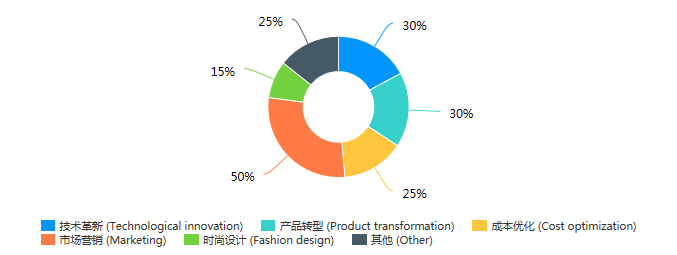
Concerning the answer “other” , we find that some experts expressed that the price stability and production reduce are the top priorities for silk enterprises.
Q: In the future development of the silk industry, which of the following new technologies should actively absorb and adopt

Basic information of the enterprise or unit
Q: Business scope
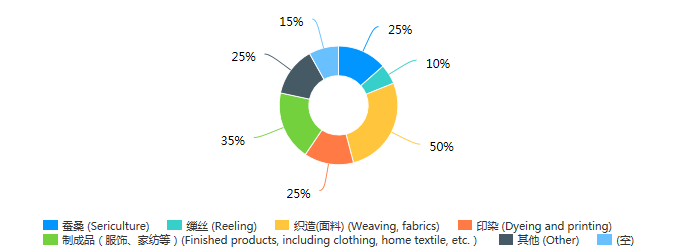
"空" in the diagram means that some scientific research institutions, industry associations and units are not involved in production and trade, and have not answered this question. It also has the same meaning in the following diagram.
Q: Enterprise scale
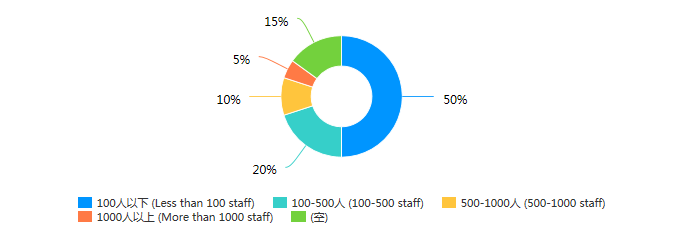
Q: Annual operating income in 2019 (USD)
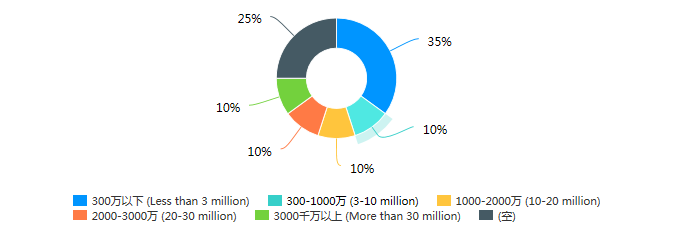
Q: Enterprise' main distribution model
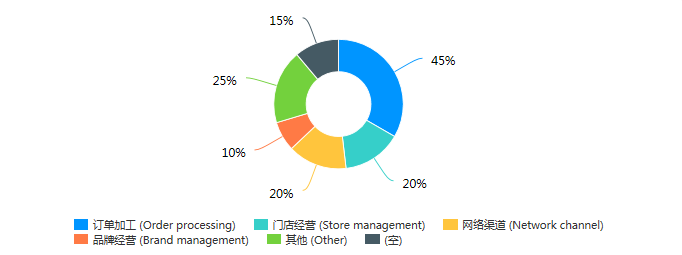
Impact of COVID-19 on enterprises
Q: Up to now, the situation of business start-up
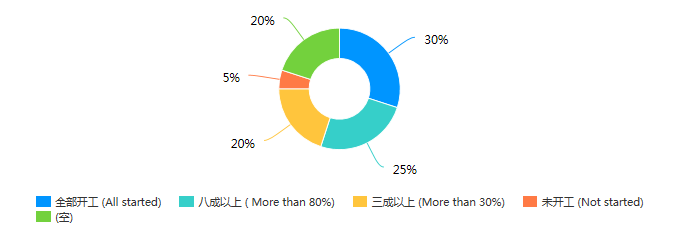
Q: Enterprise orders source or the major services regions
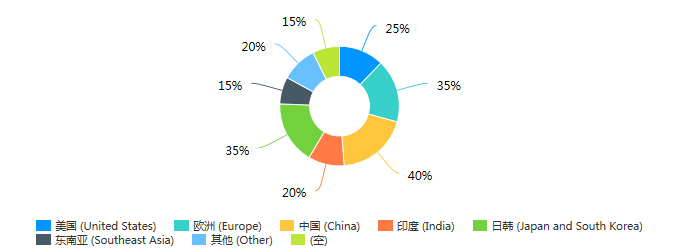
Q: Enterprise’s expected lose to lose production or operations in 2020 because of COVID-19

Q: Enterprise's current major difficulties
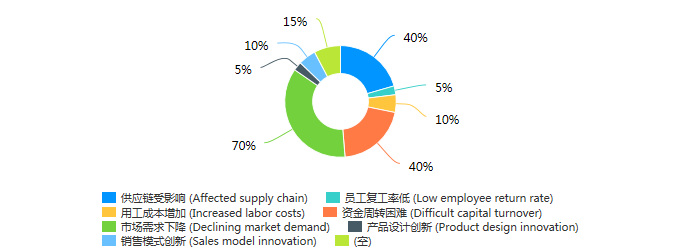
Q: Enterprise's predict on the order volume in the first quarter of 2020 compared with the same period of the previous year

Q: Enterprise's predict on operating income in 2020 compared to the previous year
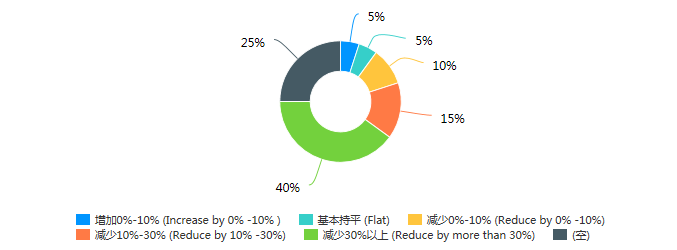
Conclusion:
With the support and participation of the industry associations, organizations, and companies, the survey conducted by ISU has collected the production and consumption data, the current situation and main views from nine silk countries including Italy, Japan, Brazil, India, Thailand, Vietnam, Cambodia, Laos, Indonesia. The companies involve in fabrics production, printing and dyeing, and finished products production, etc. Based on the questionnaire data and expert opinions, the main conclusions are as follows:
1. Production and operation situation: At present, the global epidemic peak has not yet appeared. Like most industries, the international silk industry has suffered severe impacts from production to trade, offline consumption is basically frozen, the industry and enterprises were in various anxieties large or small, half of the respondents believe that production and operating losses will be less than 30% by 2020, which is caused by the general environment.
2. Difficulties and countermeasures: Facing the impact of epidemic, 40% of enterprises have difficulty in capital turnover. At present, the main policy support of various countries is the taxation and loans. The end of the epidemic still unclear, silk enterprises should make full use of the current policy support, actively apply for low-interest loans, reduce foreign investment, optimize the internal structure of the enterprise, rationally control production costs and expenditures, and avoid difficult capital turnover or broken capital chains.
3. Transformation and development suggestions: Silk is a traditional industry, and silk products are not necessities of life. Silk belong to enjoyable consumption that improves the quality of life. 70% of the respondents said that market demand has declined significantly. After the epidemic, how to revitalize market demand is a hot issue that the industry needs to discuss together. Expert recommendations are as follows:
1) In terms of products: Improve products quality, strengthen innovation, research and development. Such as improving silk performance and quality, developing medical protection and health silk products;
2) In terms of production: Build a digital factory to achieve rapid response in the upstream and downstream of the supply chain and reduce inventory;
3) In terms of trade: Establish long-term and stable foreign trade partners, expand cooperation areas, and enhance anti-risk capabilities;
4) In terms of sales: Relying on the Internet, make full use of the sustainable fashion concept of silk, and explore the path of "Internet + traditional industries".
Silk, known as the "Queen of Fibers", occupies an important position in the textile industry. Facing the impact of epidemic, we should build self-confidence, governments, associations and enterprises hold together for development, and we should regard the epidemic as a turning point, improve ourselves internally, and strive for stability externally. We believe that we can overcome the difficulties together and usher in the dawn.

